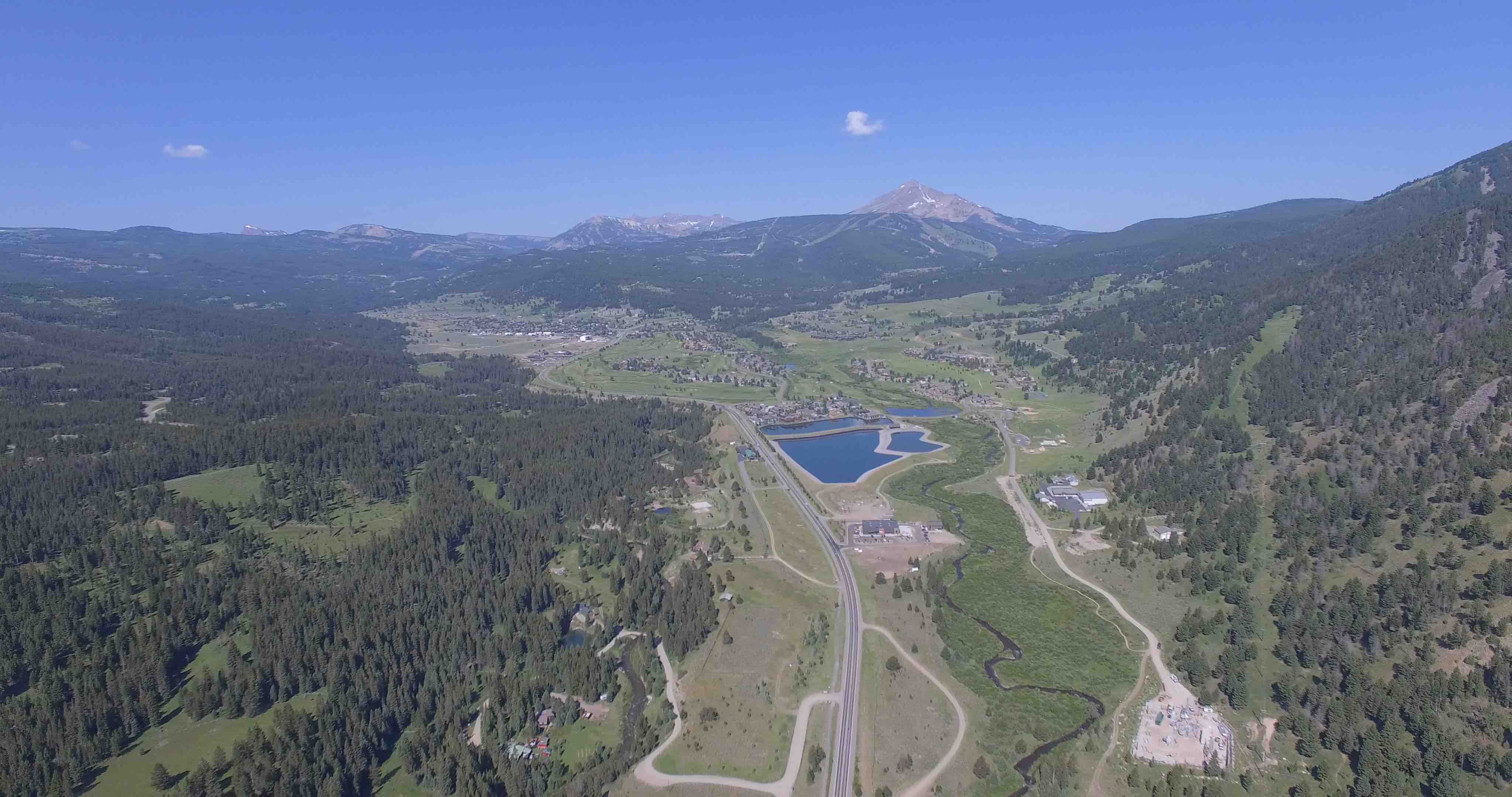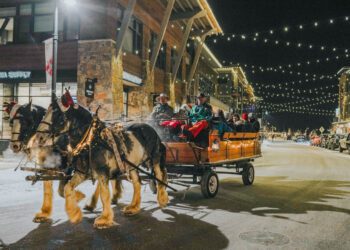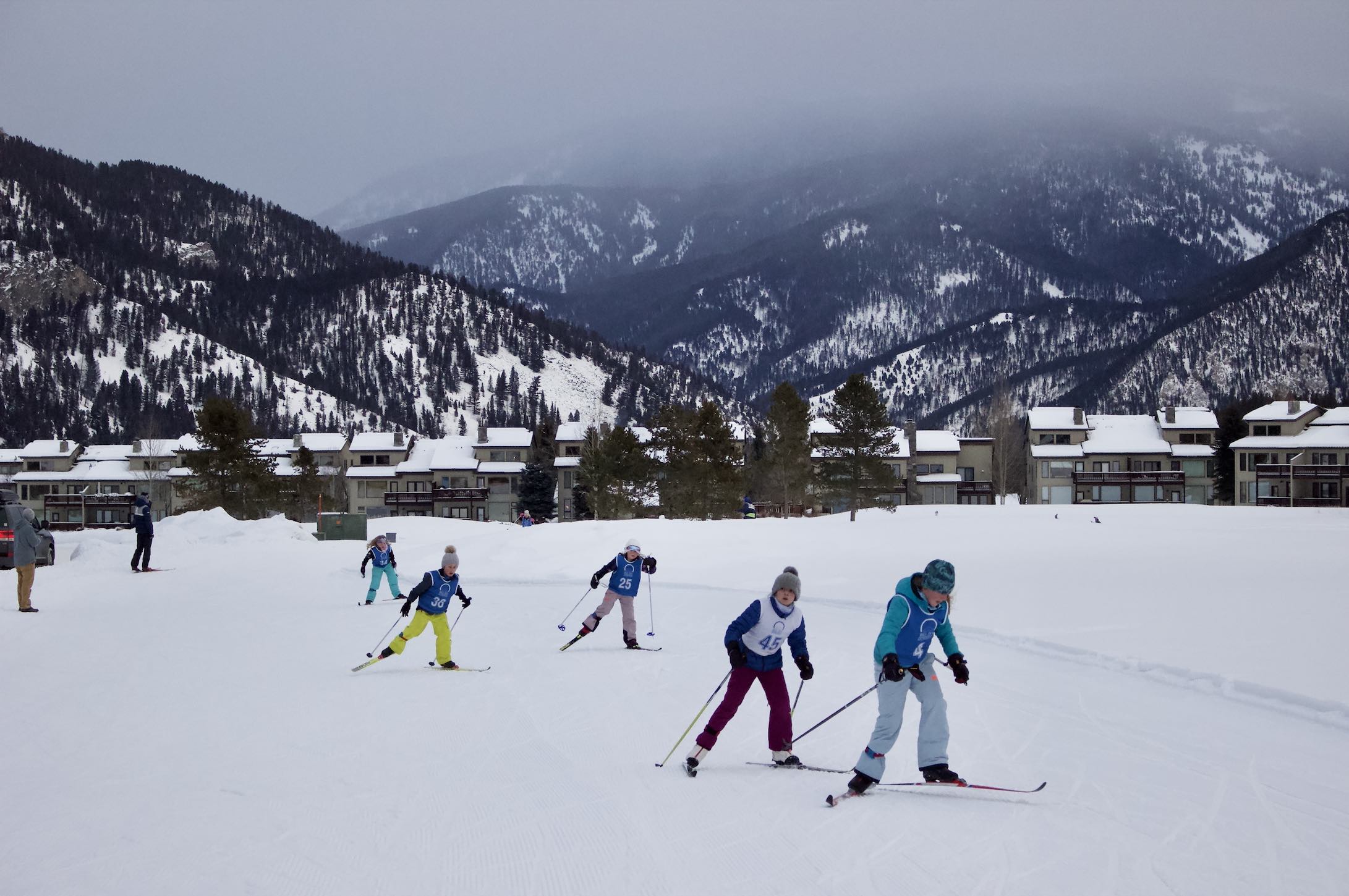Big Sky Resort, tucked among the wild peaks of southwest Montana, began with NBC News anchor Chet Huntley’s dream of “if you build it, they will come” in 1973 and is now attracting visitors and second homeowners in droves. Today, Big Sky epitomizes the modern Wild West as developers are betting big money, to the tune of $1 billion by some accounts, that it will be the world’s next great destination resort community, while its full-time residents hang on for the ride.
In this five-part series, Jackson, Wyoming-based writer Brigid Mander and Explore Big Sky staff interviewed nearly 100 sources to chart the development history of a community that sprouted at the base of a ski area—unusual for Western resorts that typically began as mining or railroad towns where ski infrastructure followed.
This series will take readers through the unorthodox development history of Big Sky, from Huntley’s big idea in the ‘70s; Boyne Resort’s purchase of the resort after Huntley’s untimely death; Tim Blixseth’s acquisition of large swaths of land around Big Sky Resort and his founding of the private Yellowstone Club; financial ruin of three large resorts during the Great Recession and CrossHarbor Capital Partners’ acquisition of them in bankruptcy court; and the explosive development, challenges and opportunities happening here today.
At the core of the community is an iconic, towering peak that’s been drawing snow speculators for more than four decades. – EBS Staff
Read part one here.
Read part two here.
Read part three here.
Read part four here.
Part 5: A ship without a captain?
By Brigid Mander EBS Contributor
The two county commissions that oversee Big Sky don’t collaborate much beyond helping Big Sky with law enforcement and occasionally hosting joint meetings to hear about community funding needs, as they did in April of this year.
Madison County, a rural, agricultural county with less than 8,000 residents and a per capita income of $29,000, has found itself hosting multiple ultra-exclusive vacation home enclaves for millionaires and billionaires. The most direct impacts have been the influx of property taxes: The Big Sky levy district on the Madison side pays approximately $6.5 million of the nearly $28 million in property taxes collected by the county, according to the Montana Department of Revenue.
Gallatin County, on the other hand, is growing fast and has a host of other issues to solve in the more densely populated northern end of the county.
However, Gallatin County did inform the Big Sky Transportation District on Aug. 16 that it would provide $68,500 of the $80,000 in requested funding for fiscal year 2018, according to district coordinator David Kack. After providing $50,000 last fiscal year, this marks the second consecutive year of funding from the county for the Skyline bus system after a long drought. Madison County has consistently supported the Big Sky Transportation District.
Some residents of this unincorporated community believe relying on the seven special districts, nonprofits and homeowner association boards isn’t the way to run a town.
“The resident population has no say in the management of our community,” said Steve Johnson, who sits on the zoning advisory committee, and fire and park district boards. “[It] has done nothing to assert its voice in shaping the direction of this community.”
“There are conflicts, some weirdness with the boards,” admits Boyne Resorts President Stephen Kircher. “If it’s clear that someone is voting their conflict of interest, we should do something. I don’t think it’s a model that should be replicated, but I don’t know what incorporation would even do for us—maybe if we can hang onto more of our tax money, great, but if it’s just adding a layer of government infrastructure, then there’s no point.”
Kevin Germain, who is vice president of planning and development for CrossHarbor’s Lone Mountain Land Company, and is on the resort tax board as well as the chamber of commerce board of directors, notes the issues, but maintains it doesn’t guarantee people are voting the wrong way.
“I am raising my three children in Big Sky and want it to be as great of a community as possible,” Germain said. “That is the perspective I bring to all my decisions on the various boards. I have reviewed the conflict of interest opinions in detail. To pass this threshold, I cannot receive ‘any direct economic benefit’ of any decisions I am part of.”
There is no guarantee, either in elected government or in Big Sky’s district boards, that people will govern purely in the public interest—but Big Sky residents seem to have a healthier than average cynicism. Developers with a financial stake in Big Sky’s continued growth sit on a number of district boards, including the Big Sky Water and Sewer District board and the Big Sky Zoning Advisory Committee.
“Big Sky is pretty Western when it comes to our municipal structure,” said Erik Morrison, owner of Love Street Media and resident since 2002. “Split between two counties, our community accomplishes everything through collaboration with districts, boards and organizations. Personally, I have a love/hate relationship with this structure. I’ve seen it be extremely effective when we all work together. … However, when our community is siloed across county lines and special interests, it brings these efforts to a grinding halt.”
“I don’t think the developers see it in their own interests to solve these problems. They deal with it in platitudes, and being part of the solution involves more than showing up to a few meetings and writing a few checks,” said Gallatin County Planner Tim Skop.
Lee Poole was one developer that left a legacy even after he lost Moonlight Basin to bankruptcy in the Great Recession. An avid bow hunter, he made conservation a priority alongside his development dreams, and took action.
“Lee Poole and his partners wanted to ensure the wildlife connectivity stayed intact,” said Germain, who joined Poole in 2001 as an environmental consultant. They sold 17,000 acres to conservation buyers, who put conservation easements on approximately 14,500 acres, which included the Jack Creek Preserve.
CrossHarbor Capital Partners does not plan to deviate from Poole’s conservation-minded development on the property, according to Germain, and managing partners Sam Byrne and Matt Kidd deserve a lot of credit for buying into the vision Poole set out. “I wouldn’t be here today if it wasn’t the case,” Germain said.
And the nonprofit Big Sky Community Organization, as well as Lone Mountain Land Company and Boyne, have invested significantly in recent years to build biking and hiking trails, to showcase other conserved lands in Big Sky—if the SUVs loaded with mountain bikes flocking to the area in recent summers are any indication, it’s working.
“The town is a blank canvas,” said Brian Hurlbut, executive director of the Arts Council of Big Sky and 16-year resident. “Development needs to be done in a way that’s respectful to the people living here. We have a vested interest in how the town moves forward.”
“We don’t have an infinite workforce. Around here it’s an excruciatingly finite resource,” Johnson said, noting the availability of employees could be a limiting factor to development plans. “We live in a place where unemployment is under 3 percent and there’s a limited number of people that want to commute up the canyon [from Bozeman].”
Germain agrees that Big Sky needs more of its workforce living here to be sustainable in the future.
“I think it’s the community’s No. 1 issue and everyone’s got to keep pushing on it,” he said. “The large employers have done a lot for the seasonal workers, but no one yet has done anything for the year-round workers and the community’s got to come together on this. Our teachers, our firefighters and our year-round workforce need to live here in Big Sky.”
Ultimately, Big Sky has the potential to be a place that could set an example for other resort towns, and indeed even larger communities. As a town that rose from a resort, with a non-traditional method of governing itself, Big Sky could show outsiders that the private sector and citizens can create a fair, well-functioning community without the layers of local government bureaucracy.
“Montana calls itself the last, best place. Big Sky could be the last, best, great ski area—but without a vision, it could all be lost,” said Kitty Clemens, former president of the Big Sky Chamber of Commerce.
“When I first moved here in the early 2000s, my fall and spring ‘offseasons’ were a solid two months on either end,” Morrison said. “Jobs were scarce, businesses closed up shop and many people left town to make ends meet. Even the summer seasons were difficult, offering few amenities and services.”
According to Morrison, it wasn’t until the Great Recession—which hit Big Sky especially hard—that the community really started working together to create many of the amenities and activities enjoyed here today.
Big Sky Resort and Moonlight significantly increased the number of events they offered throughout the year, extended their summer and winter seasons, and began adding extensive trail systems, he said. Town Center created new opportunities for businesses, amenities and venues for everything from the Big Sky PBR, the arts council’s free Thursday night concerts, and farmer’s markets, to the Big Sky Medical Center, Roxy’s Market and more.
As documented in this series and other stories published by EBS, Big Sky has enough developable land to at least double in size, and by some estimates $1 billion will be invested here in the next decade. The current challenges of affordable housing, water and sewer rights, traffic issues, and development impacts on wildlife habitat and connectivity will necessitate a collective effort by the various developers, districts boards, HOAs and nonprofit organizations that serve as Big Sky’s quasi government.
“Personally, I want to see us work together, learn from the mistakes of our fellow mountain communities—like Jackson, Aspen, Vail, etc.,” Morrison said. “As a town Big Sky is young, still relatively undeveloped and is in a unique position [for stakeholders] to work together to ensure we develop an economy that is not at the expense of our community.
“It’s not too late for us to do it right.”
Reporting was contributed by EBS Managing Editor Tyler Allen.
EBS will continue its coverage of the challenges facing this rapidly growing resort community and feature profiles of community members guiding the vision of Big Sky’s future in upcoming editions.











